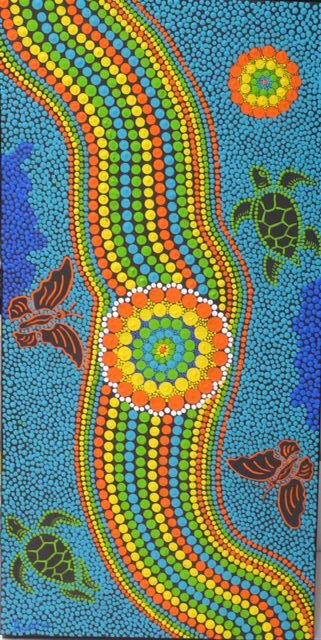The world today has closely associated the Aboriginal art and especially the dot art with Australian traditional mysteries. Actually, you can find the art in most galleries and private collections. This art is among the oldest form of art in the world with the oldest one dating from approximately 30,000 years ago. Even though the Australia Aboriginal art has become popular, only a few people may be aware of the mysteries and meanings linked to some of the dots and symbols on each of the art works. The fact that there might be some meaning behind the art is evident with experts who have linked beliefs of Aboriginal people to some of the drawings.

There are many types of styles with regard to Aboriginal art, with both time depth and regional differences. Each region for instance, has varying styles as one goes back in terms of years. You can confirm this from the example of studies by Kakadu from the North and Kimberly from the West. The rock arts showed several evolving styles that dated to over 10,000 years ago. Generally, the paintings and carves were divided into two wide categories: the figurative and the non-figurative. However, the art itself is more complex than just the paintings and carves. It also includes, free standing carvings, stencils, thread-cross strings and objects such as raised designs on sand, charcoal drawings, and the application of feathers among others.
The dot art itself emerged in the 1970’s after the Papunya art movement in Western Australia. Geoffrey Bardon, an art teacher, supported the movement and even instigated the placing of a wall mural. The art movement, supported Aboriginal artists to change their art signs and symbols, and dreaming designs on the ground to permanent art on canvas material. The designs had dancing circles as a representation of the sacred mysteries and spiritual events. They showed maps drawn in form of lines, dashes, spirals and circles. This new drawing style led to an uprising in public demand for the protection of the meaning and secrets of those Australia Aboriginal dot art.
The political sector intervened with protection laws which led to the use of dots by artists as a way of hiding the real meanings behind each art. Even with the high public pressure on the protection of secrecy, Papunya Tula artists came up with a way to originally mirror the traditions and spiritual rituals. The rituals involved the clearing and smoothening of soil as a canvas. This was done for the drawing of sacred designs that replicated movements of the ancient beings upon earth. Dancing circles and dots were then added to the designs. After that, the imprinted earth drawing was smoothened and painted bodies rubbed away to ensure complete masking of the secrets.
It does not matter whether the Australia Aboriginal dot art is a concealer, sacred or even just symbols of rain, feathers, the fact still remains that the dot art is complex and at the same time very innovative. When you look at the art by Warrangula Tjupurrula, you can see the overlaying dots techniques and superimposed patterns that cause shapes and objects to merge in and out of each other. There is an incorporation of a balance between modern and traditional art knowledge. The dot style, regardless of its original meaning is rhythmic and gives a sense of movement. All these show some kind of inspiration which is similar to the practiced rituals.